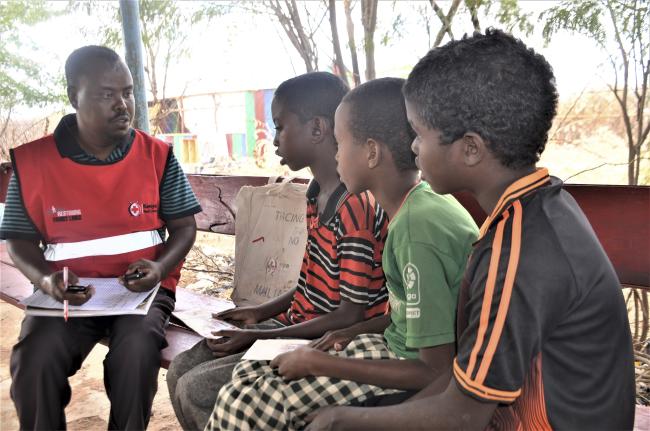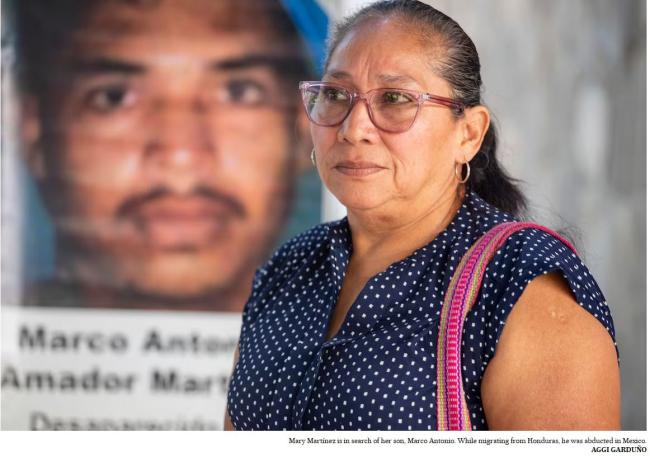Smarter, wider, faster: How the search for missing persons evolves.

Throughout its 150-year history, the Central Tracing Agency has constantly adapted, improving its techniques to search for missing persons and developing new methods and tools.
Currently, the Central Tracing Agency and the Red Cross and Red Crescent Family Links Network are processing approximately 200,000 open tracing requests throughout the world. That’s 200,000 people who have gone missing due to armed conflict, other situations of violence, natural disasters or in the context of migration. For each of these people, there are families and communities who need answers.
Our involvement in the search for a missing person is usually triggered by a request made by that person’s family to the Red Cross and Red Crescent Family Links Network. The request sets the ball in motion and we begin by collecting the basic information we need to search for the missing person – who they are, how they went missing, any likely places they might be, etc. We then use these “clues” to begin our search process.
In many situations, the families have exhausted all possible leads and so require support to continue the search for their relatives. Thanks to the vast geographic coverage of the Family Links Network, our long-standing expertise on the matter, our unique access to places where others may not be present, and our privileged dialogue with states, non-state armed groups and other key stakeholders, we have been able to clarify the fate and whereabouts of thousands of missing persons and provide answers to their families.
In general, the most difficult people to trace are those who go missing across borders. In such cases, even the smallest of clues cannot be overlooked. As the families themselves lose contact with each other, individual members might approach different ICRC delegations or National Red Cross or Red Crescent Societies, or even other organizations and entities. This makes it difficult for our teams to establish the connections: case workers who only have access to a limited number of databases must constantly cross-check with colleagues in other ICRC delegations or National Societies to identify potential matches. Each database may hold a clue to locating the missing person, but how can we possibly search everything and still maintain data security and adhere to data protection laws and standards?
This year, to help solve more cases, the CTA launched a new digital technology, known as Missing Persons Digital Matching (MPDM). This powerful search engine employs artificial intelligence, facial recognition and advanced algorithms, to cross check and match data between different unconnected data sources. MPDM is capable of tapping into numerous internal and external data sources , including those in other geographic locations or owned by other organizations (such as ICRC’s own delegations databases, but also the UNHCR, IOM, MSF and others) allowing case workers to broaden the extent of their searches, which increases the chances of finding potential matches. MPDM automates some parts of the laborious data-matching process by enabling quick cross-checking and matching of data, a previously impossible dream.
By working closely with the ICRC’s data protection office, the developers were able to create a tool that ensures the protection of the data of the people concerned, as well as compliance with data protection rules. Florence Anselmo, head of the CTA, explains, “Sharing data with different stakeholders is always a challenge when it comes to data protection. The data are often very sensitive and cannot be shared indiscriminately. With MPDM, we are able to compare data without sharing them, thereby protecting people’s data and remaining compliant with our strict data protection rules, regulations and principles, as well as those of other organizations.”
The ICRC delegation in Egypt was the first to use the new tool – to look for a missing person whom it suspected was in Libya. Surprisingly, however, the team received a “match” to a person whose information was in a database in Tunisia – a source it might never have searched without MPDM. As a result of this important clue, the team learned that the missing person had safely crossed to Italy. Though the team had not yet found the person, this was a promising step in its search. The Egypt delegation handles a heavy caseload of missing migrants and often has limited information to guide it in its search. MPDM offers a lot of hope to the delegation, helping it search for information on missing persons simultaneously across multiple databases and therefore improving the likelihood of locating those people.
The ICRC delegation in Egypt has also incorporated other technological resources into its daily work to complement the information already available and deal with an increasing number of unsolved cases of missing persons. Having performed a deep analysis of its caseload to better understand the root of the problem, the delegation quickly realized that when its teams meet families to open missing person cases, they don’t collect sufficient information about the location where the missing person ought to have been – often the first clue as to the person’s fate and whereabouts. Now, when collecting information from the family, the teams use maps and satellite images to identify precise locations, sometimes even the exact house. This has produced positive results, in the form of additional leads and more cases solved.
In addition, the delegation now engages with the families of missing persons as partners in the search process. Together, they reflect on the possible individuals, groups, associations or communities that may hold valuable information regarding where the missing person might be or the routes or locations they may have taken or passed through. The information gathered as a result facilitates the identification of further sources of information, and the ICRC team and the families of missing persons then decide together on the next steps.
These various simple ways to improve data collection and quality have proved extremely successful. Today, the Egypt delegation is solving four times as many cases of missing persons as before. This means it can provide answers to more families desperate for information about their missing loved ones, as well as, in some cases, arrange telephone calls or even family reunifications.



